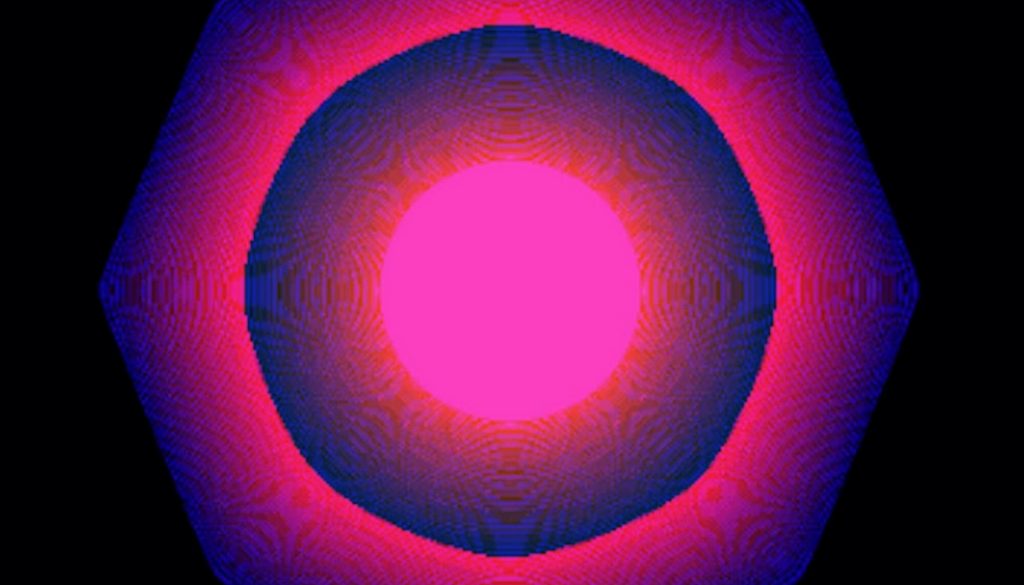On May 3, 2014, a quiet but revolutionary moment unfolded in the world of digital art and blockchain technology: artist Kevin McCoy released “Quantum,” widely regarded as the first non-fungible token (NFT), on the Namecoin blockchain. This event, occurring during a live presentation at the Seven on Seven conference in New York City, marked the birth of a concept that would later explode into a multi-billion-dollar industry. Quantum, a pulsating, octagon-shaped digital artwork, wasn’t just a piece of art—it was a proof-of-concept for a new way to establish ownership and provenance in the digital realm, using blockchain to create a unique, transferable record. On this day, McCoy, alongside tech entrepreneur Anil Dash, laid the groundwork for what we now call NFTs, forever altering the intersection of art and technology.
The stage for May 3, 2014, was set at the New Museum, where the Seven on Seven conference—an annual event pairing artists with technologists—brought McCoy and Dash together. Tasked with creating something novel in just 24 hours, the duo tackled a persistent problem in digital art: how to prove ownership and authenticity in a medium where files could be endlessly copied. McCoy, a New York-based multimedia artist with a deep interest in Bitcoin since 2013, saw blockchain as the solution. Namecoin, a Bitcoin fork launched in 2011 to decentralize domain name registration, offered a platform to experiment. On this day, McCoy minted Quantum by registering it as a “name” on Namecoin’s blockchain, linking it to a URL hosting the artwork (http://static.mccoyspace.com/gifs/quantum.gif) and a public announcement on Twitter. The transaction, recorded in Namecoin block 174923 at 18:27 GMT, declared: “Title transfers to whoever controls this blockchain entry,” making it a pioneering claim of digital ownership.
The moment itself was both technical and theatrical. On May 3, as part of their presentation, McCoy and Dash demonstrated their system, which they dubbed “monetized graphics” or “Monegraph.” In front of a live audience, McCoy sold Quantum to Dash for $4—the only cash Dash had in his wallet—using Namecoin to transfer the blockchain entry. The artwork, a hypnotic animation of concentric shapes pulsing in fluorescent hues, captivated attendees with its simplicity and its implications. The room buzzed with a mix of curiosity and skepticism; some laughed at the idea, unable to grasp its potential. Online, the crypto community took note, with early adopters on BitcoinTalk and Twitter marveling at the fusion of art and blockchain. McCoy’s tweet that day, announcing Quantum’s creation, rippled through niche circles, though it would take years for the world to catch up.
Behind the scenes, May 3 was a day of improvisation and vision. McCoy and Dash had been wrestling with the technical limits of Namecoin, which wasn’t designed for art but for key-value pairs like domain names. They hacked together a workaround, embedding metadata—a hash of the GIF file (SHA256: d41b8540cbacdf1467cdc5d17316dcb672c8b43235fa16cde98e79825b68709a)—into the blockchain entry to tie it to Quantum’s digital file. The process was clunky; Namecoin required periodic renewal every 250 days, a quirk that would later spark controversy, but on this day, it worked. The transaction fee was a modest 0.01 NMC, and miners on the network validated it, cementing Quantum’s place in block 174923. For McCoy, a 47-year-old artist with a history of exploring digital media, it was a eureka moment—born from his fascination with Bitcoin’s scarcity and his desire to empower artists in an internet age where copies were king.
On May 3, 2014, Quantum’s release didn’t make headlines. Bitcoin was worth about $450, Namecoin was a niche altcoin, and the term “NFT” wouldn’t be coined until 2017. Yet, the day resonated with possibility. Attendees at Seven on Seven whispered about its implications, while Dash later reflected on the irony of their $4 sale launching a concept that would one day fetch millions. Quantum itself—a 9MB TIFF file of abstract, code-driven motion—embodied McCoy’s artistic ethos: an exploration of creation, cycles, and digital identity. On this day, it became more than art; it was a spark, igniting a slow burn toward a future where digital ownership could be as real as physical property. McCoy and Dash couldn’t have known it then, but May 3, 2014, planted a seed that would grow into a cultural and technological phenomenon.
